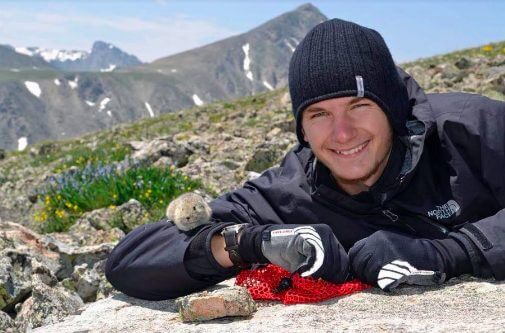Written by Conservation Colorado staff
Imagine a game of Jenga. As each wooden block is removed from the tower, it becomes less and less stable. While the removal of one block has little effect, the removal of another will cause the entire tower to collapse.
Now, imagine each Jenga block is a species. There are plants, snakes, birds, mammals, and all the rest. Imagine each player is a threat to an ecosystem. There’s climate, habitat loss, and pollution. As each player removes a wobbly, loose piece, the entire tower gets shakier. Water pollution may remove a crustacean. Habitat loss easily takes out a few big predators. New diseases or fungus with expanding ranges hurt amphibians and bats.
The tower gets shakier.
But climate change is the biggest threat of all, the one that could cause the entire tower to tumble.
This is the scenario we are faced with now. Colorado’s animals are facing threats from all sides, with climate change front and center. Take, for example, the pika. This high-alpine critter is “as charismatic and curious as you and me,” according to Maxwell Plichta. He’s been researching pika for 3 years with the Front Range Pika Project. He loves seeing pika on hikes and points out that they’re also an important species for gauging how the environment is reacting to climate change. They’re a furry, high-alpine “canary in a coal mine.”
Pika are in especially bad shape when it comes to climate change Jenga. These little critters don’t do well above 78 degrees Fahrenheit. If they can’t find a place to cool off, they die. Comfortable in the winter and high-alpine environments, pika can’t do well at both extremes. In Colorado, pika live in high mountaintops. This means that they’ve got nowhere to go if their home gets too warm.
Pika have already disappeared from a third of their habitat in Oregon and Nevada. Recent studies show pika are doing OK in Colorado – perhaps due to the high mountain habitat available. According to pika researcher Liesl Erb, “It is good news that pikas are doing better in the Southern Rocky Mountains than some other places. It is likely that the geographic traits of the Rockies are a big reason why we are not seeing significant declines, at least not yet.”
According to Erb’s research, the places in the southern Rockies that lost pika were the driest, not the hottest. She points out that some models predict the exact sort of hot, dry climate in Colorado’s future that dooms pikas. This just goes to show how difficult it is to predict how climate change will affect wildlife.
Pika are considered an indicator species. Removing their Jenga block from the tower may not cause its collapse. It shows the danger what could happen with unabated climate change. Pika are early, easy targets. Their demise may predict danger for less vulnerable species later. In other words, disappearing pikas could be a stark warning of what is to come.
Emissions and carbon pollution threaten the air, water, and climate of both animals and people. We can protect animals from climate change the same way we protect people – support good climate policy, elect leaders who make climate action a priority, and work on ways to curb our own personal use.




